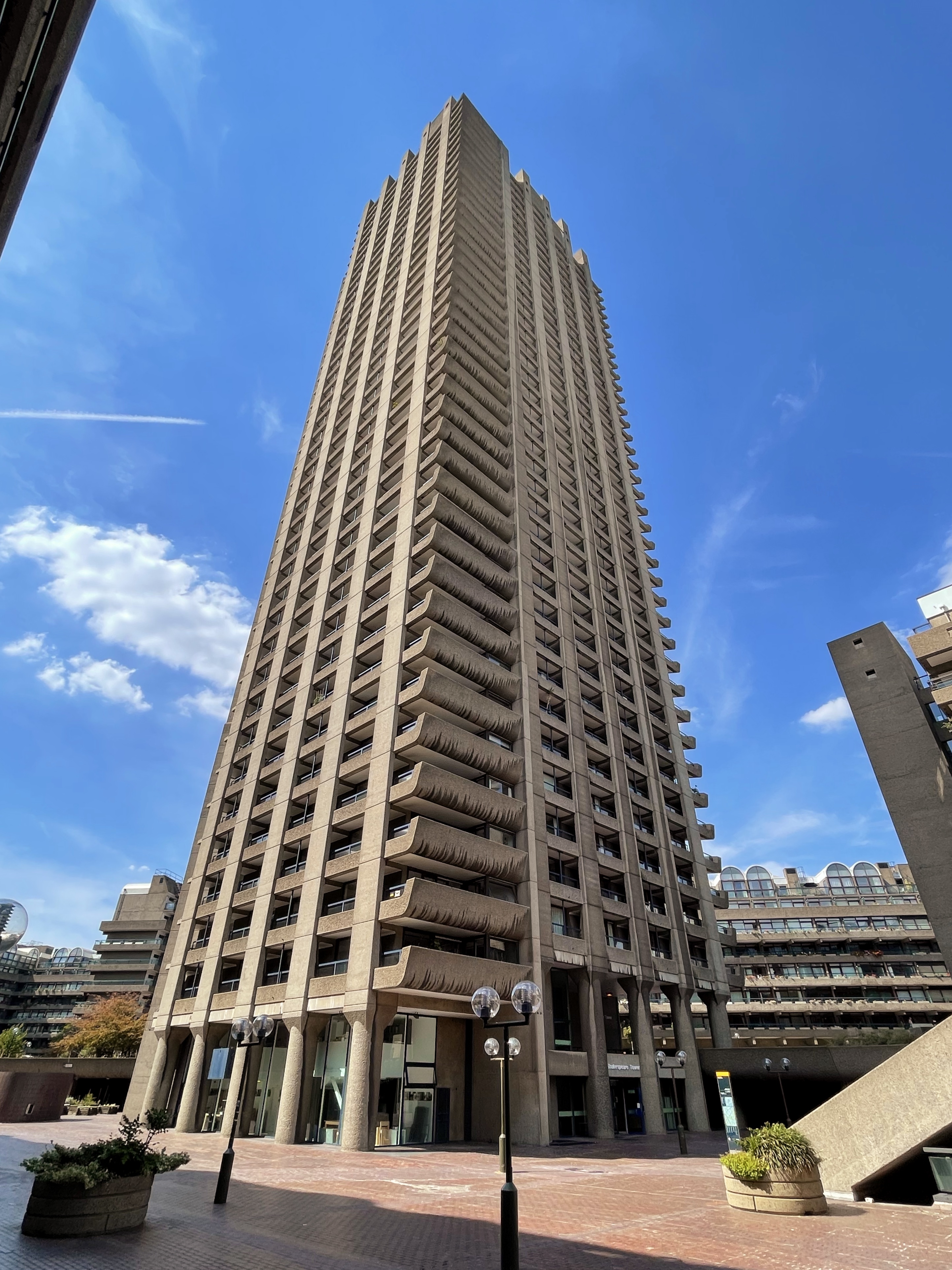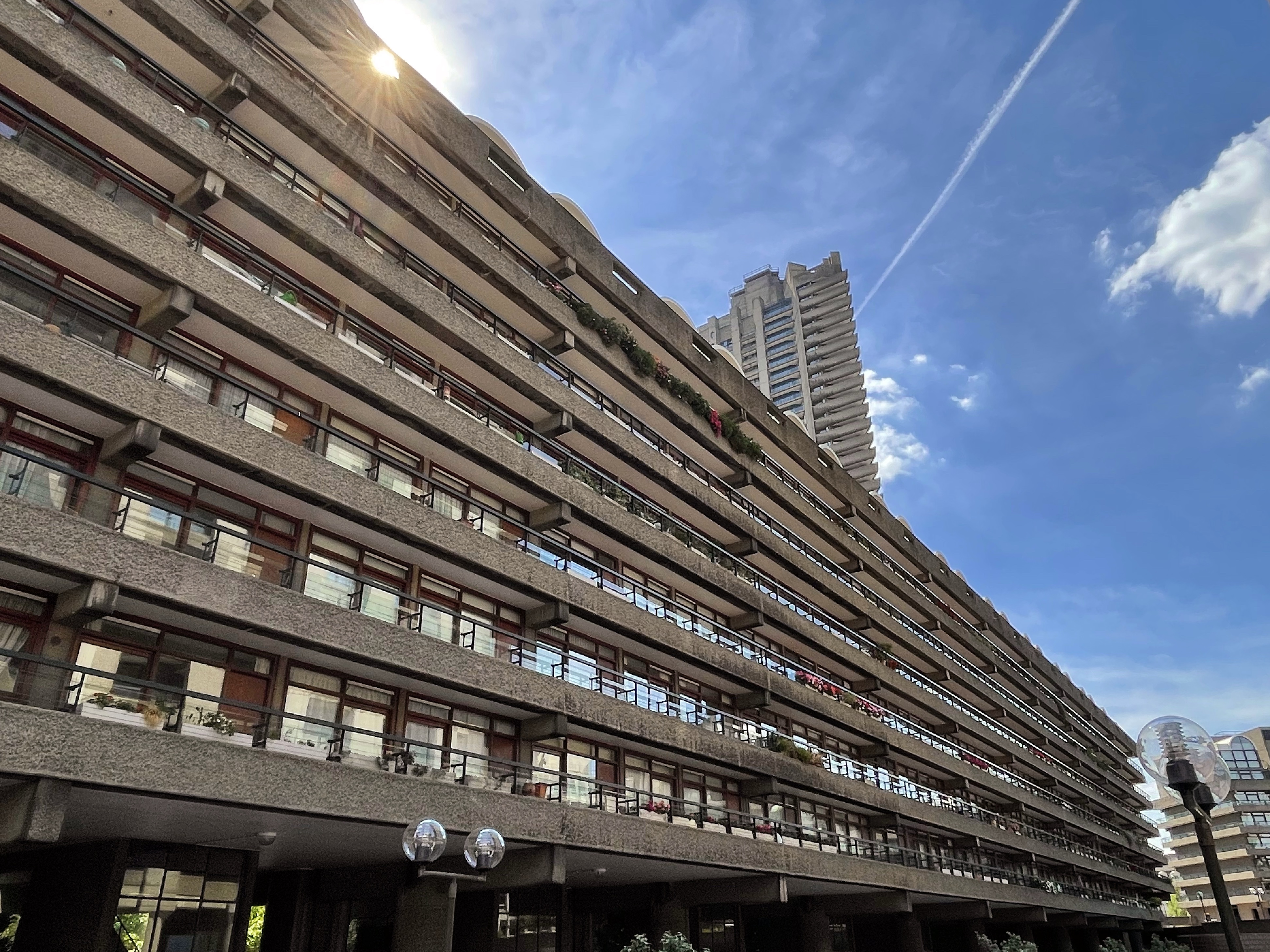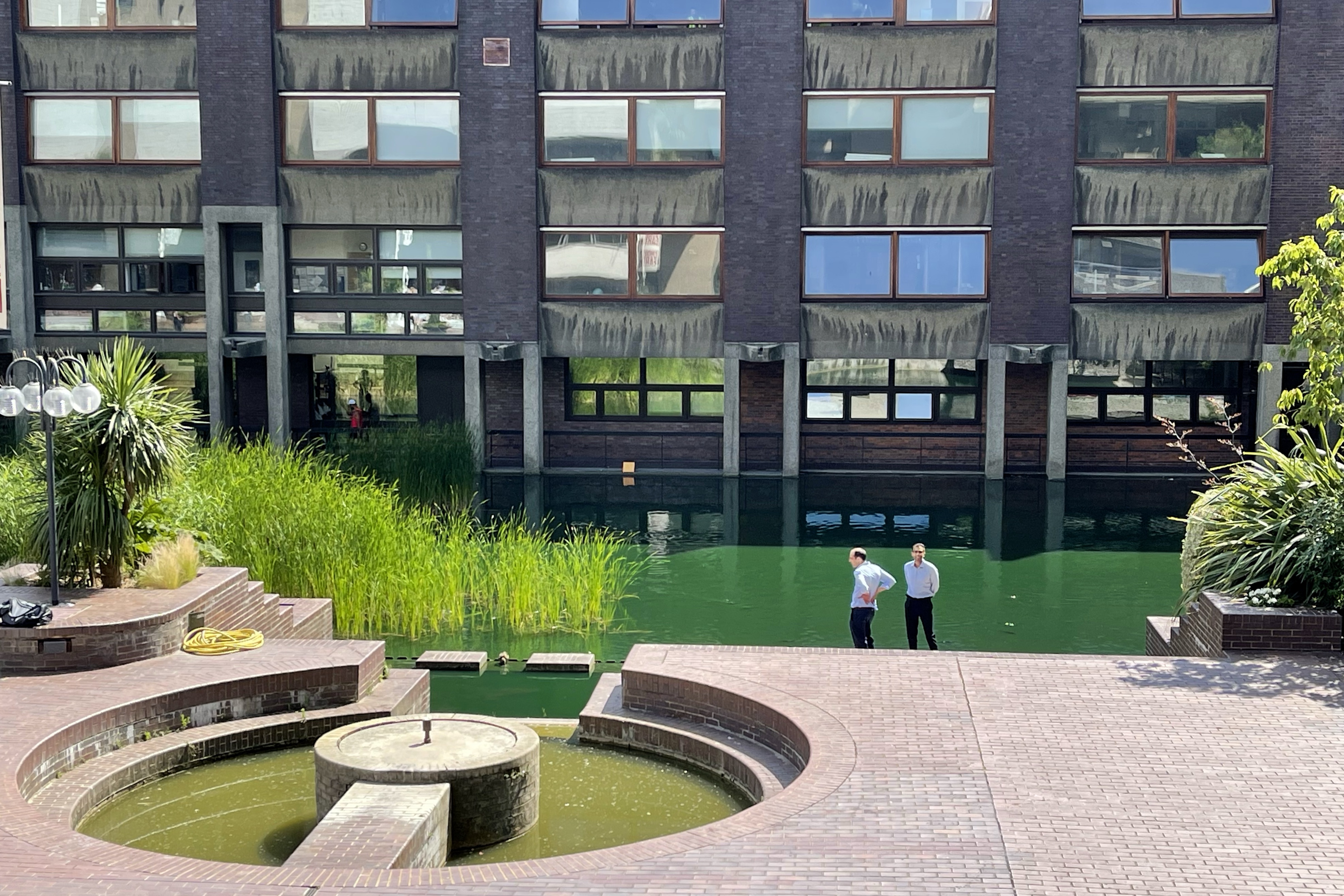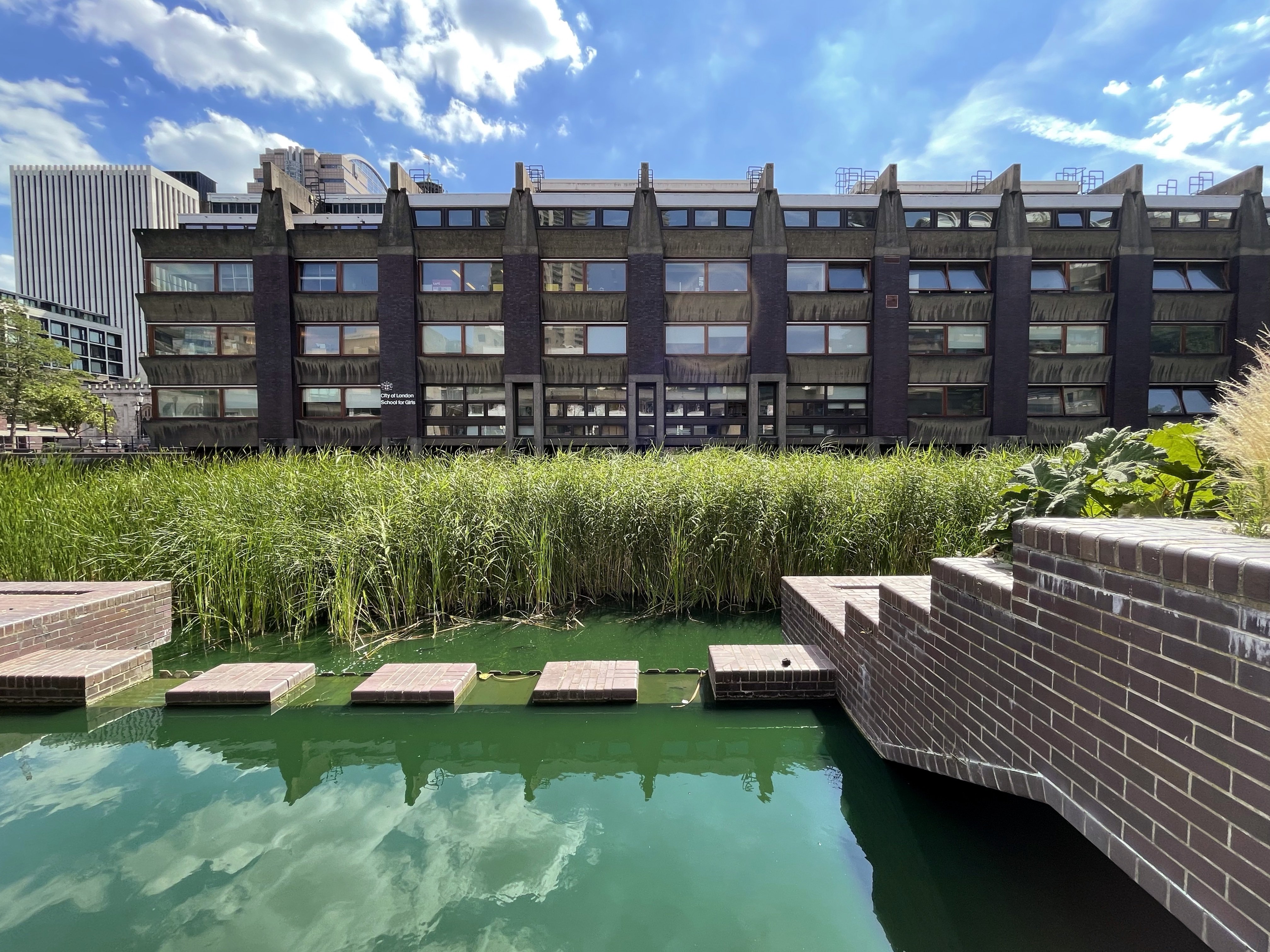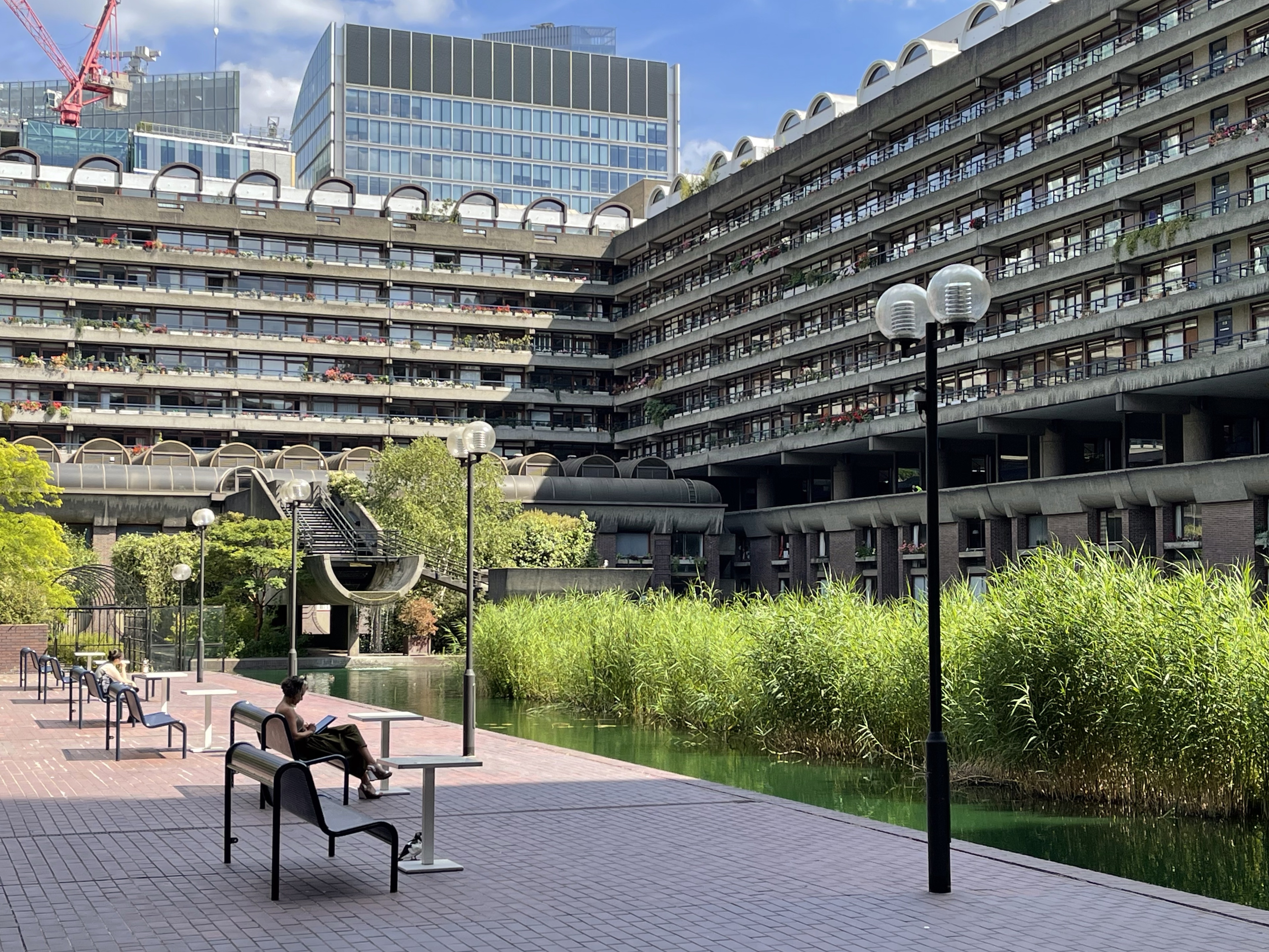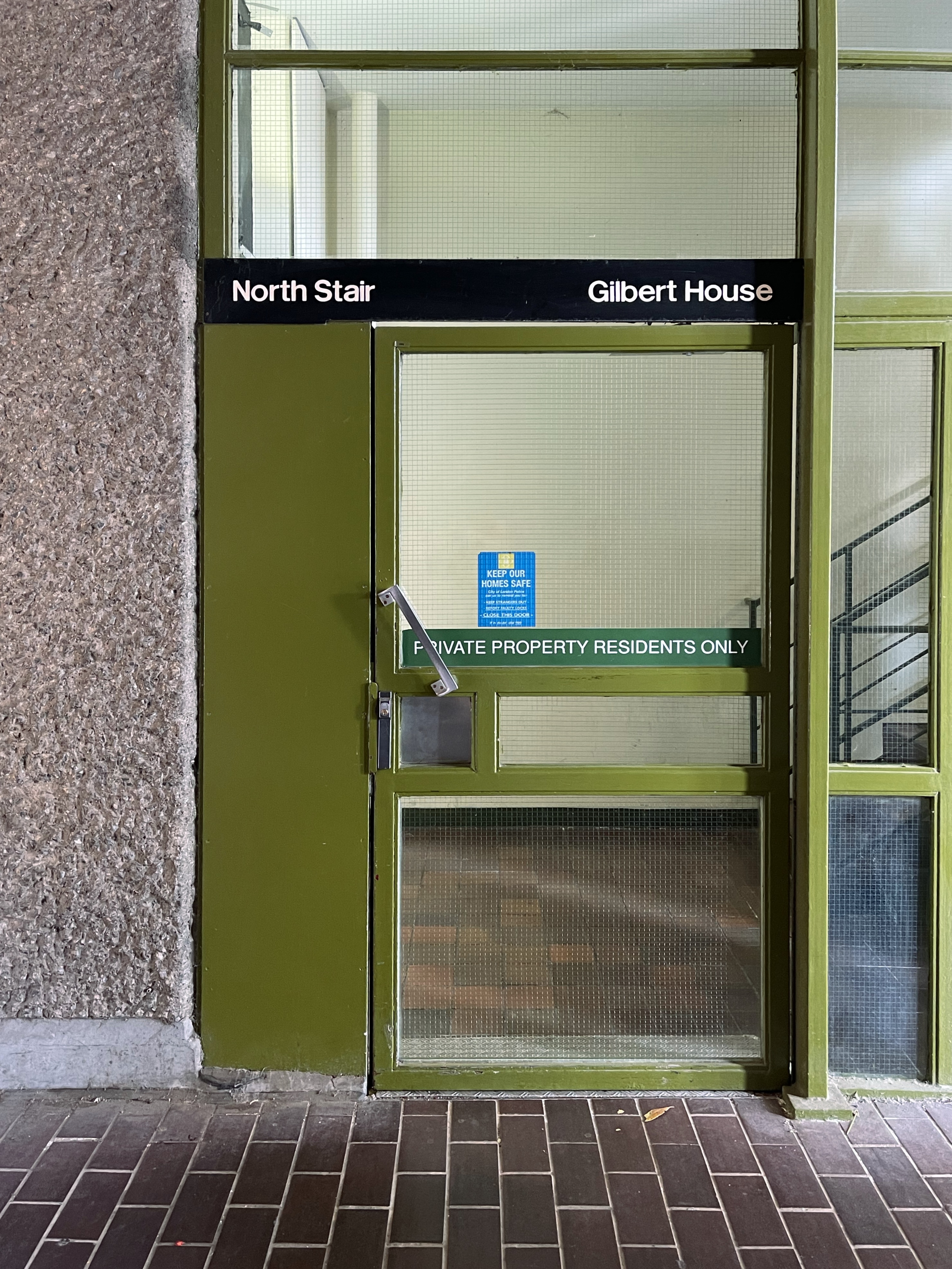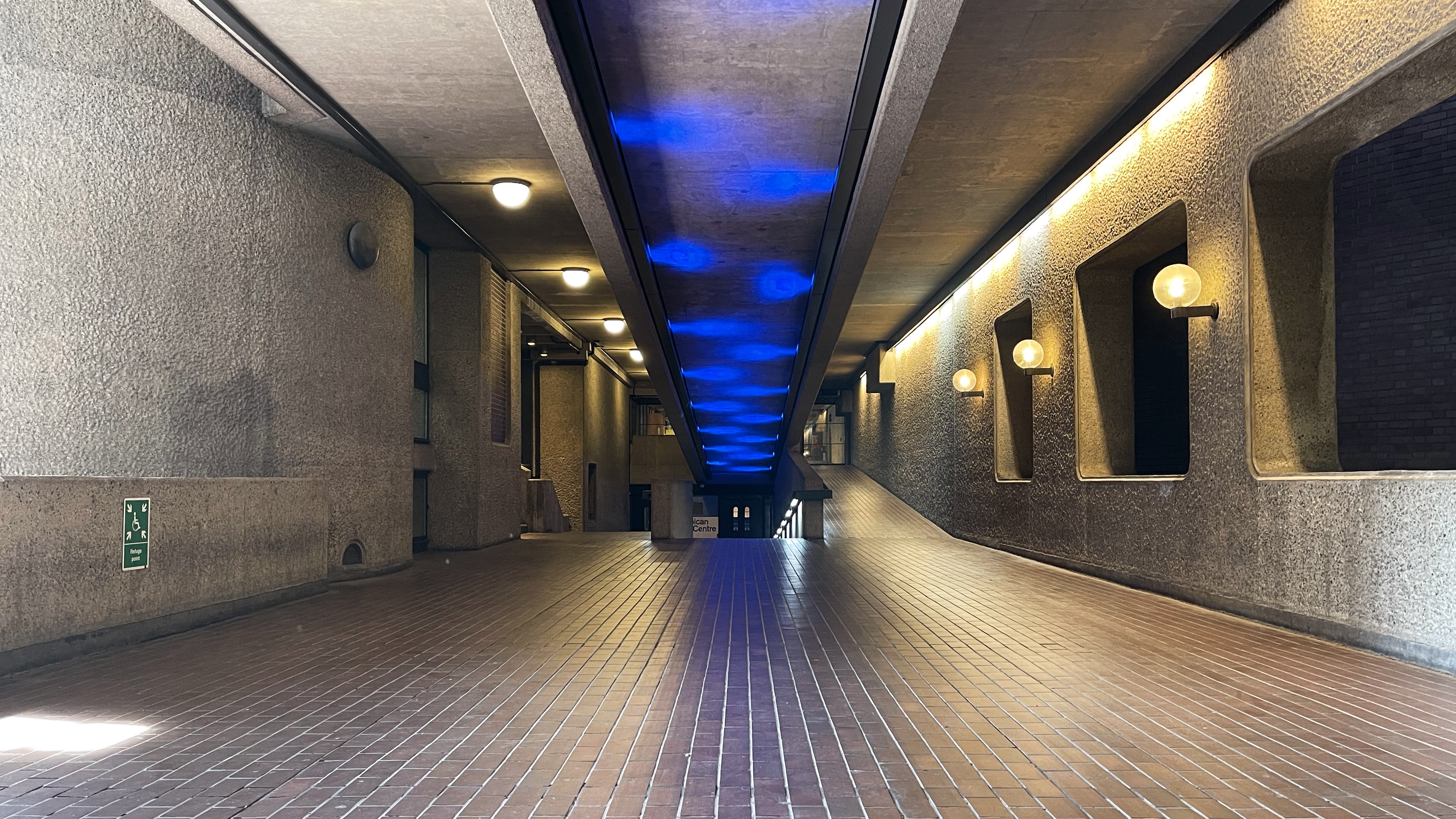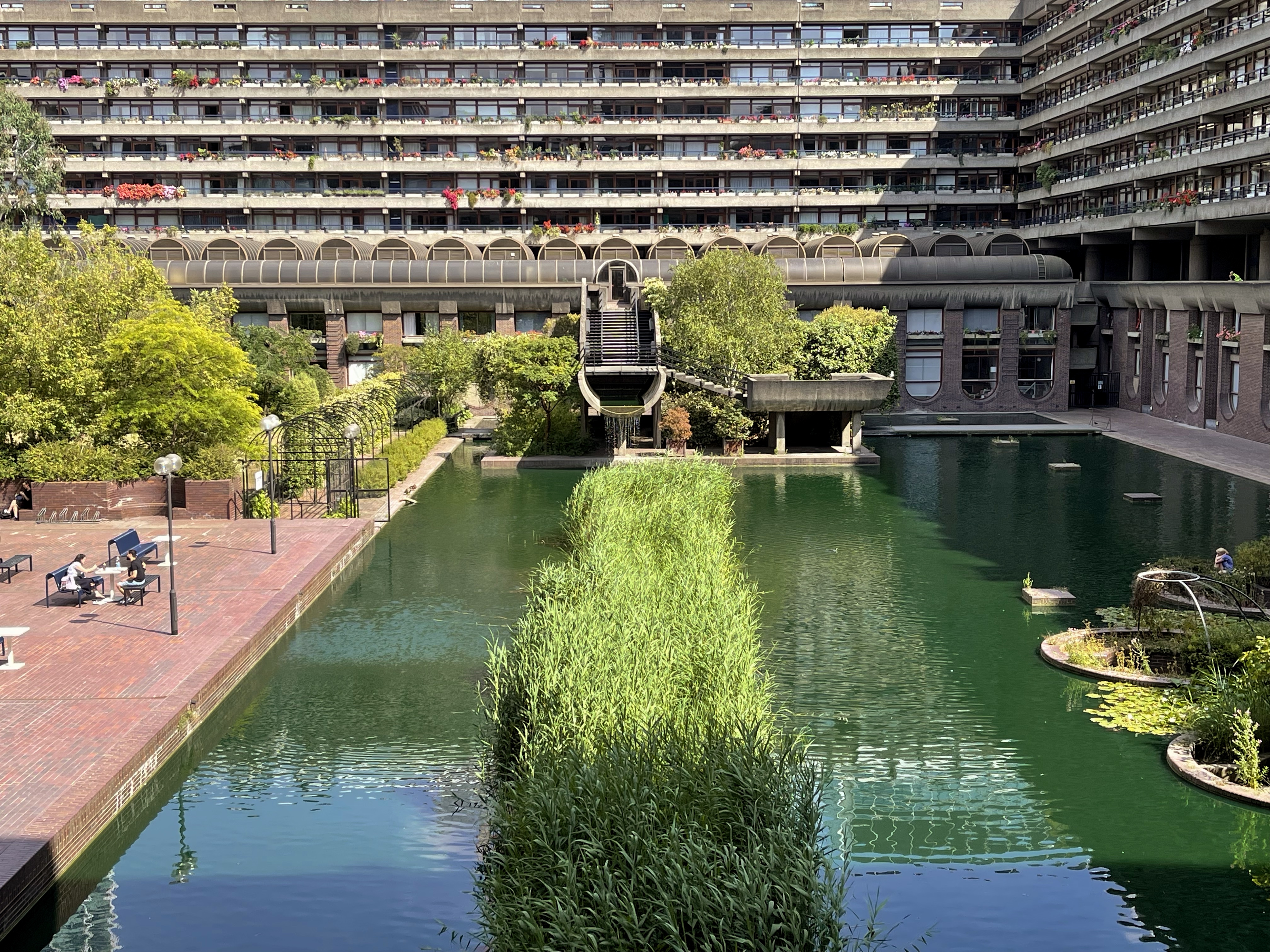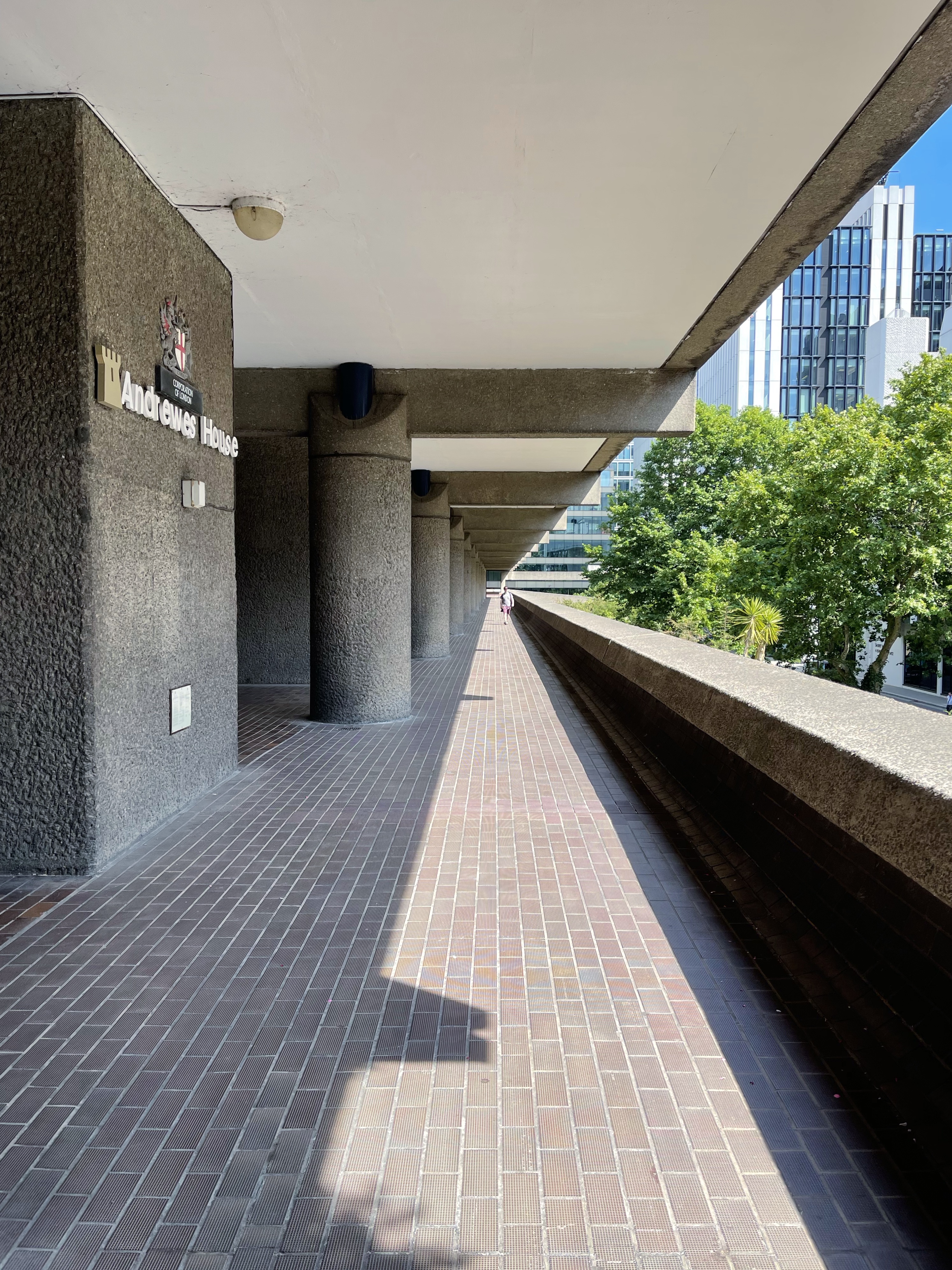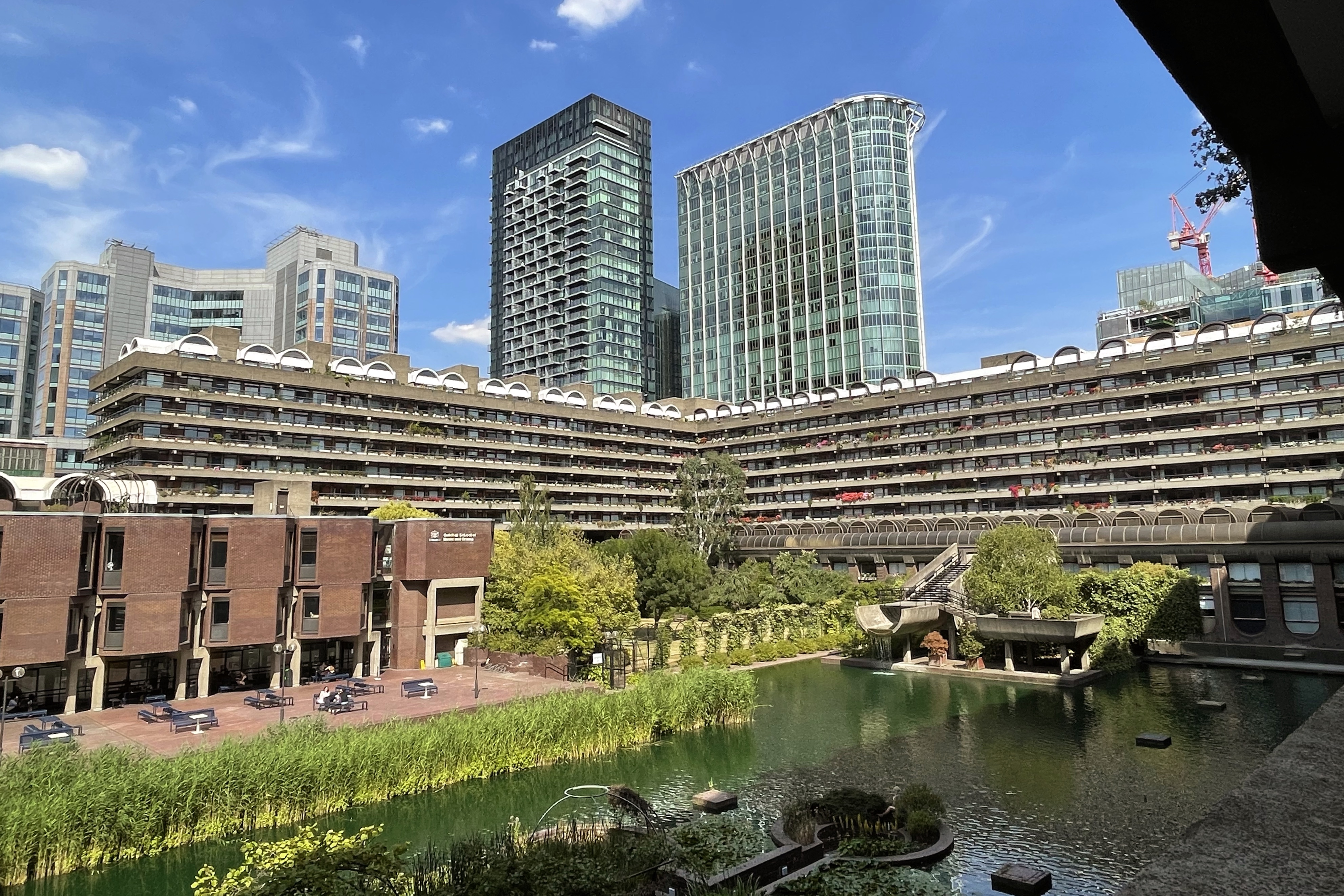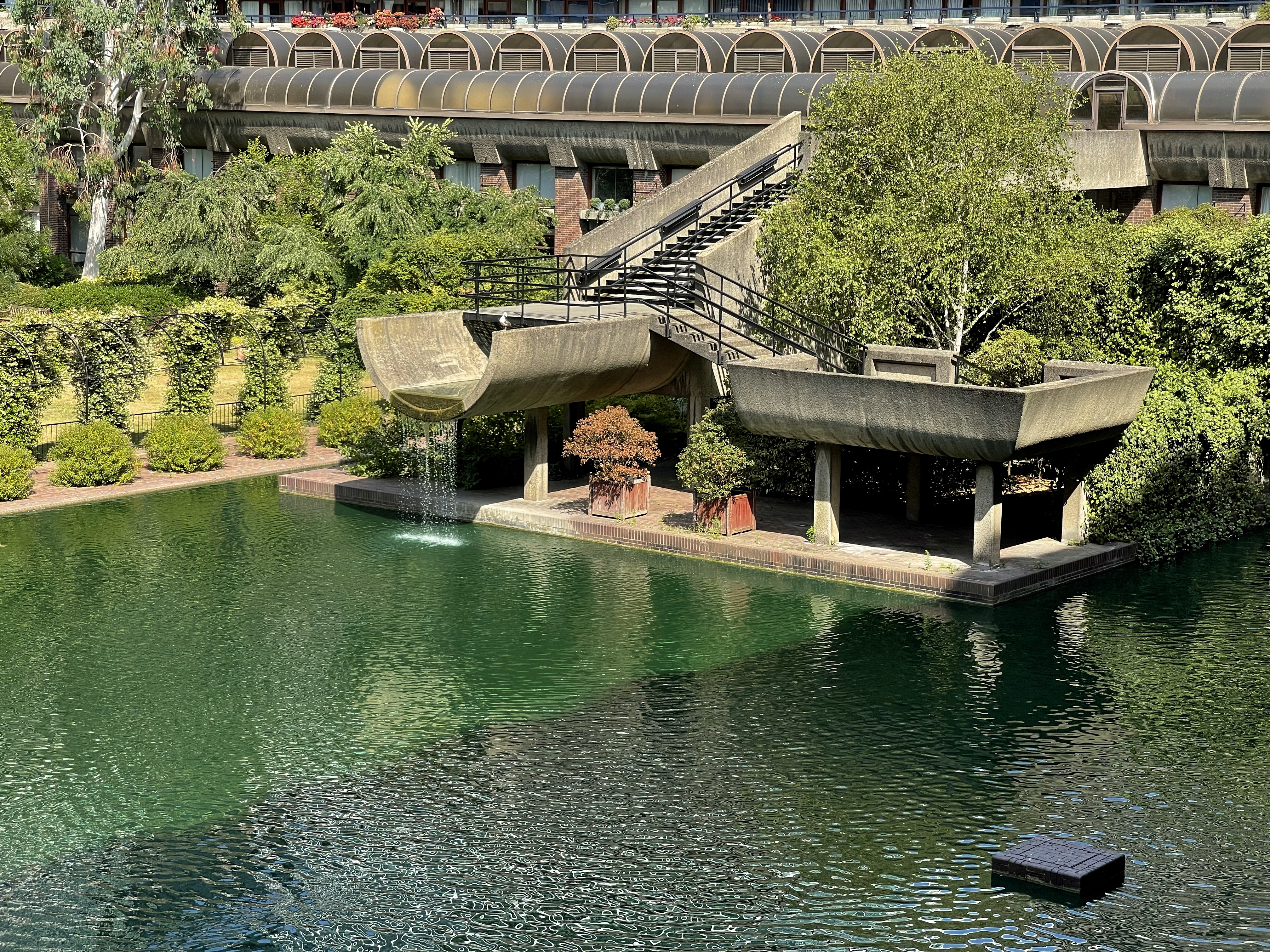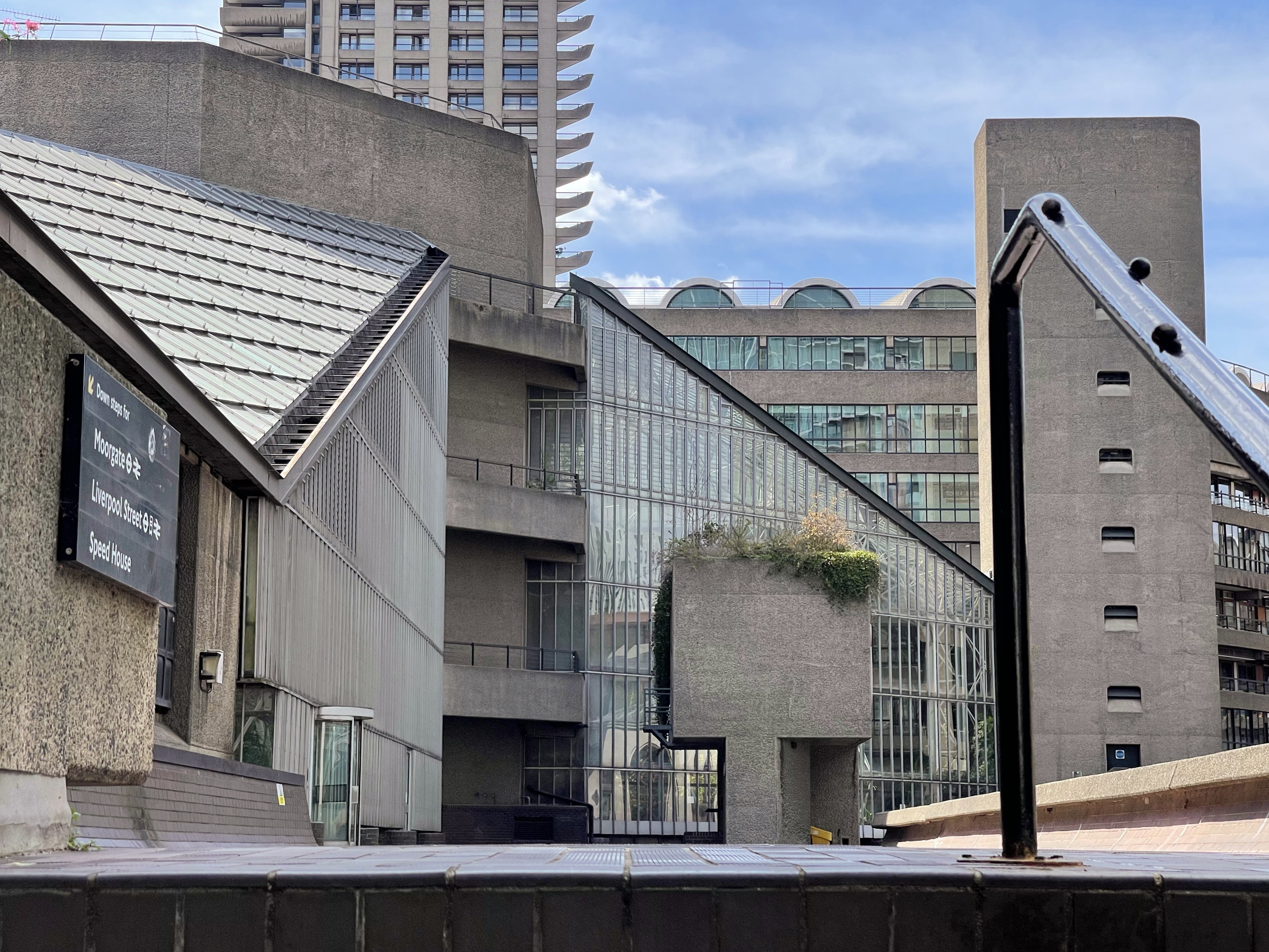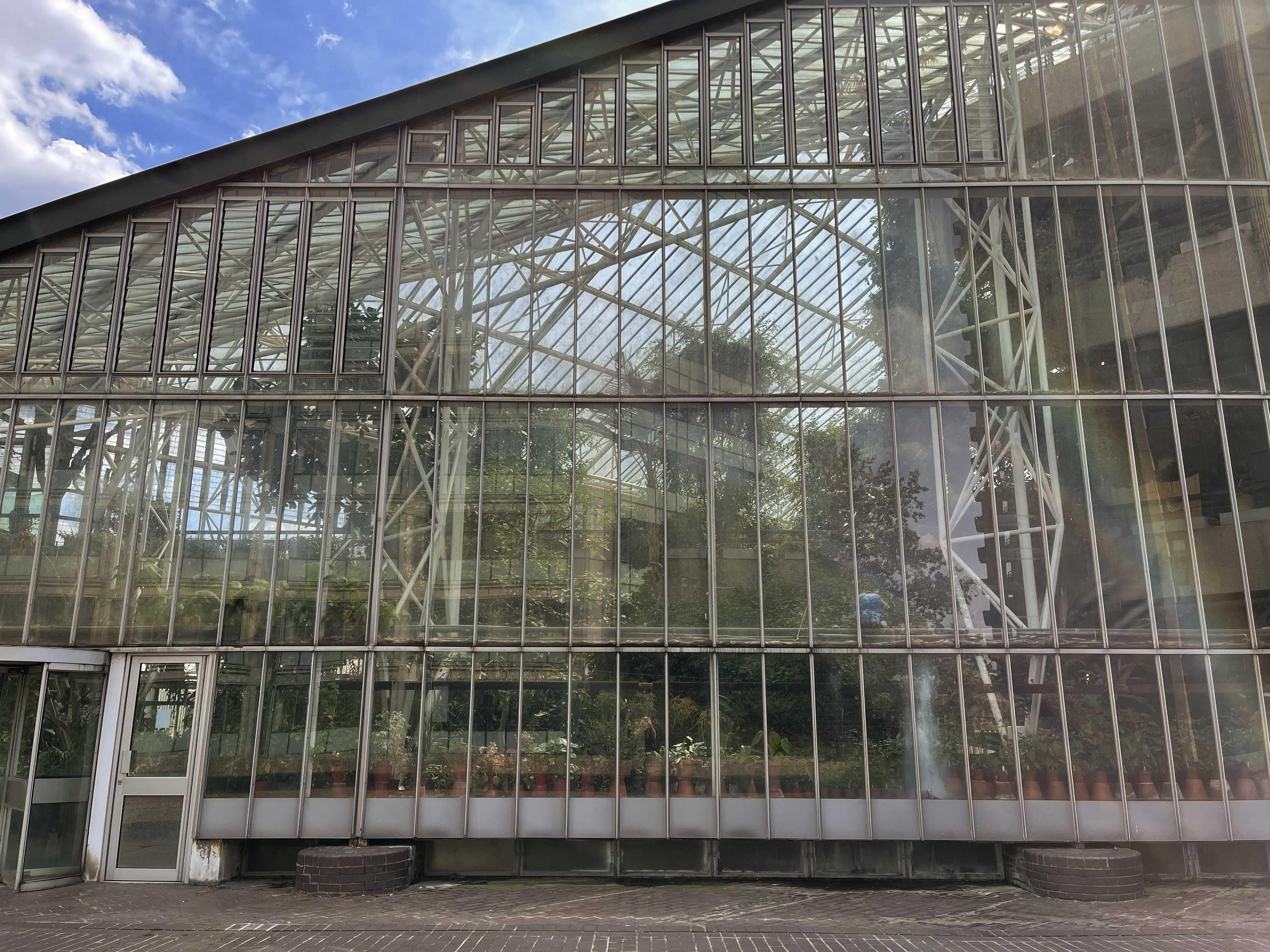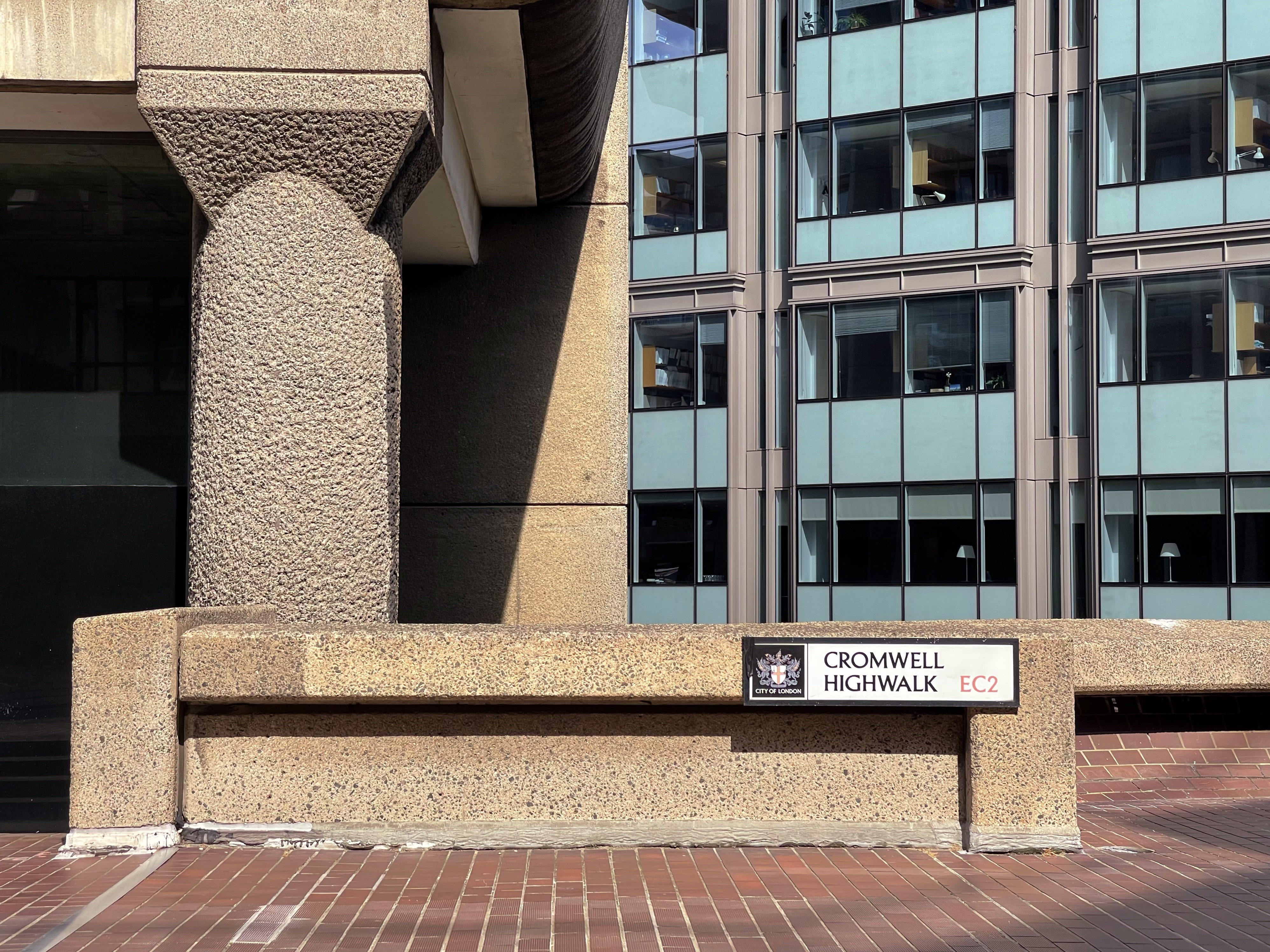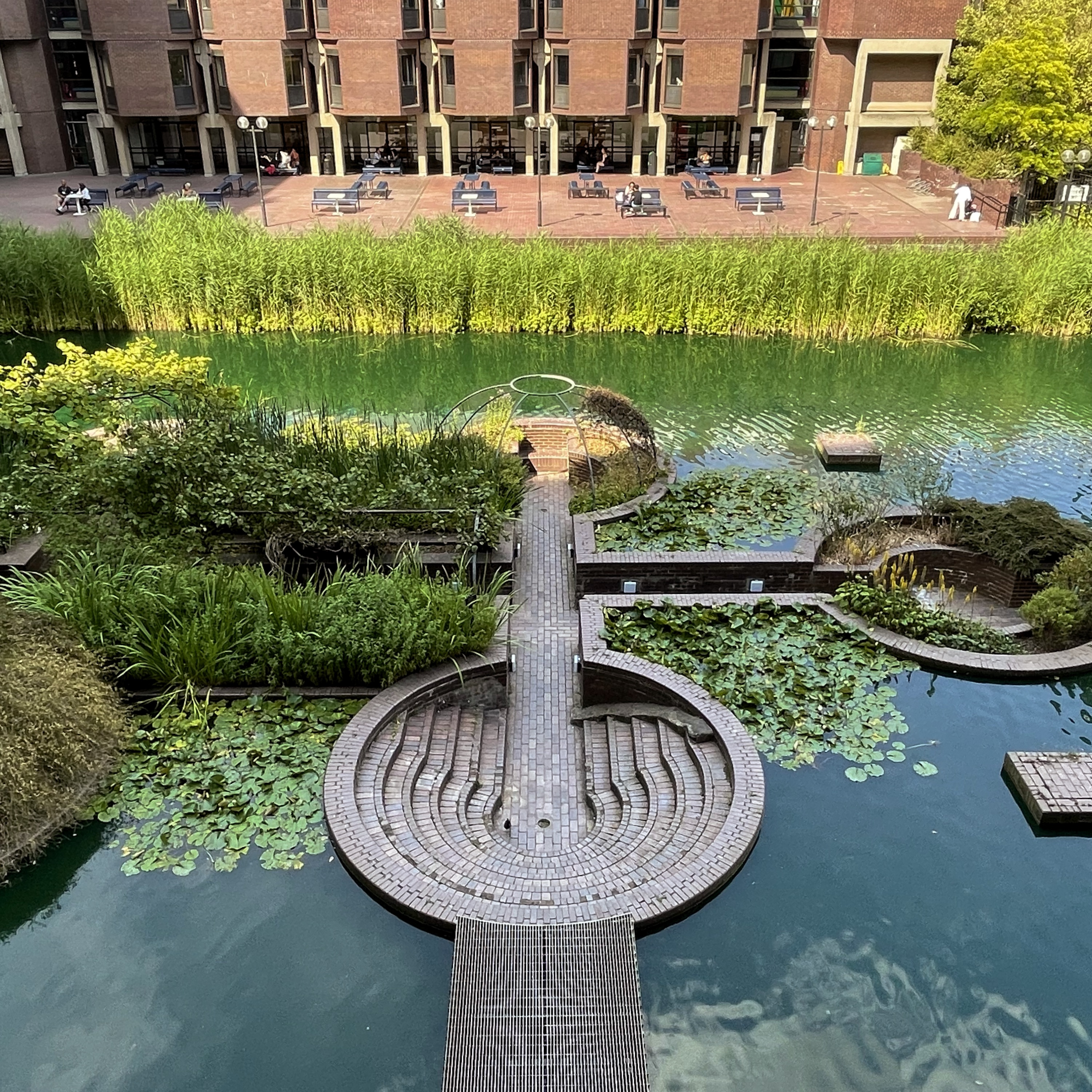
The Barbican Estate is one of my favourite places in London, and also one of the strangest from an architectural standpoint. Located in the heart of the City of London, it seems at odds with its surroundings as a monument to brutalist architecture in the heart of London’s financial centre. It’s home to around 2,000 residents, an arts centre and an almost unhealthy amount of concrete. And yet out of all of this, I think something strangely beautiful emerges.
I visited right in the midst of the UK’s infamous 2022 heatwave, and let me tell you a concrete jungle is about the worst place to be when trying to escape the heat. But I wanted to embrace the opportunity of exploring the Barbican’s labyrinthine pathways and remarkable views.
The Barbican is noteworthy for its forward thinking layout. Essentially existing on two levels with the roads down on the ground, and everything connected by raised walkways suspended above. Readers of my blog will know how much I value places which separate people from traffic, and the Barbican is a prime example of this philosophy in action.
Due to its location and layout, the Barbican hasn’t suffered the same fate as most council estates. Residences here are sought after, and a quick glance shows that even a modest sized maisonette goes for well over a million pounds. With the adjunct Barbican Centre, it’s also a hub for the performing arts with concerts, plays and film screenings amongst other events.
I do love brutalist architecture, but I’m at least one undergraduate degree away from being able to speak to it with any kind of informed authority. So, I’ll let this piece function as a photo essay in which the images can evoke their own narrative without my commentary.
If you want to visit – and I recommend you should if you’re in town – it’s within reach of either Moorgate or Barbican stations which are on multiple tube and national rail lines.
There are also some additional resources at the bottom should you wish to learn more.


